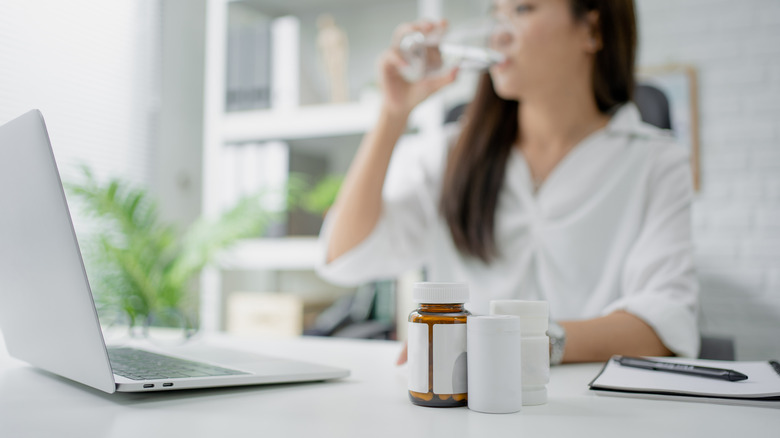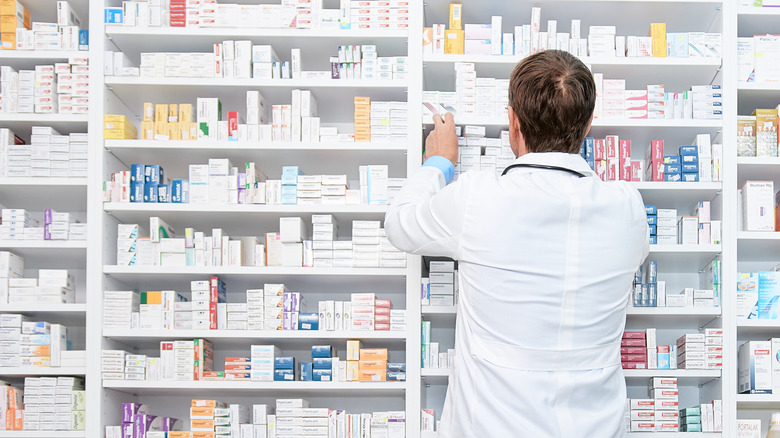The Real Reason There Are Cotton Balls In Pill Bottles
Every time you open a new bottle of pills, there's a good chance a ball of cotton is sitting on top of the medication inside. Have you ever wondered why there's an extra item in each bottle? All you end up doing is throwing it in the trash. It turns out, there actually is some reasoning behind this fluff.
Cotton balls were first used in pill bottles by Bayer, a pharmaceutical company known for their aspirin (via Insider). In the early 1900s, many medications came in uncoated tablets that could easily break after bouncing around in the bottle. Bayer didn't want customers to potentially take the wrong amount of medication when piecing together broken bits of aspirin. A tuft of cotton filled in the empty space and kept everything nice and snug until the customer opened the bottle at home.
However, medications changed in the 1980s with the invention of a special coating on each pill that prevented them from crumbling nearly as easily. Although cotton was no longer needed, Bayer didn't remove the fluff from their bottles until 1999. Why? Because consumers had grown so used to this filler that they felt something was wrong if their pill bottle was missing it (via Mental Floss). Some people believed no cotton meant that their medication had been tampered with while others were under the impression that the cotton helped the pills stay more potent.
Many pharmaceutical companies still have cotton in their bottles today
Because most pills are coated in a waxy film today, that ball of cotton in the bottle is wholly unnecessary. Even though Bayer eventually removed it from their bottles, many companies still add the fluff to their pill bottles today. Just like in the 1980s, many customers expect to see a ball of cotton in their pill bottles. But there's no need to feel like you have to keep it in the bottle to ensure your medication stays safe or potent. In fact, the National Institute of Health (NIH) actually recommends removing any cotton inside a pill bottle because it can draw moisture inside and damage your medication (via MedlinePlus).
Other tips by the NIH for properly storing medication include keeping the bottles in a cool, dry place away from harsh light. Heat, air, light, and moisture can all cause damage to pills. While many people store their medications in the bathroom, the NIH advises against this location because bathrooms tend to be warm and humid. These factors can affect the potency of medication and even cause it to expire early. Choose a storage spot that remains dry and cool all day long, like in your bedroom. Just be sure to keep all medications out of reach of children and pets.


